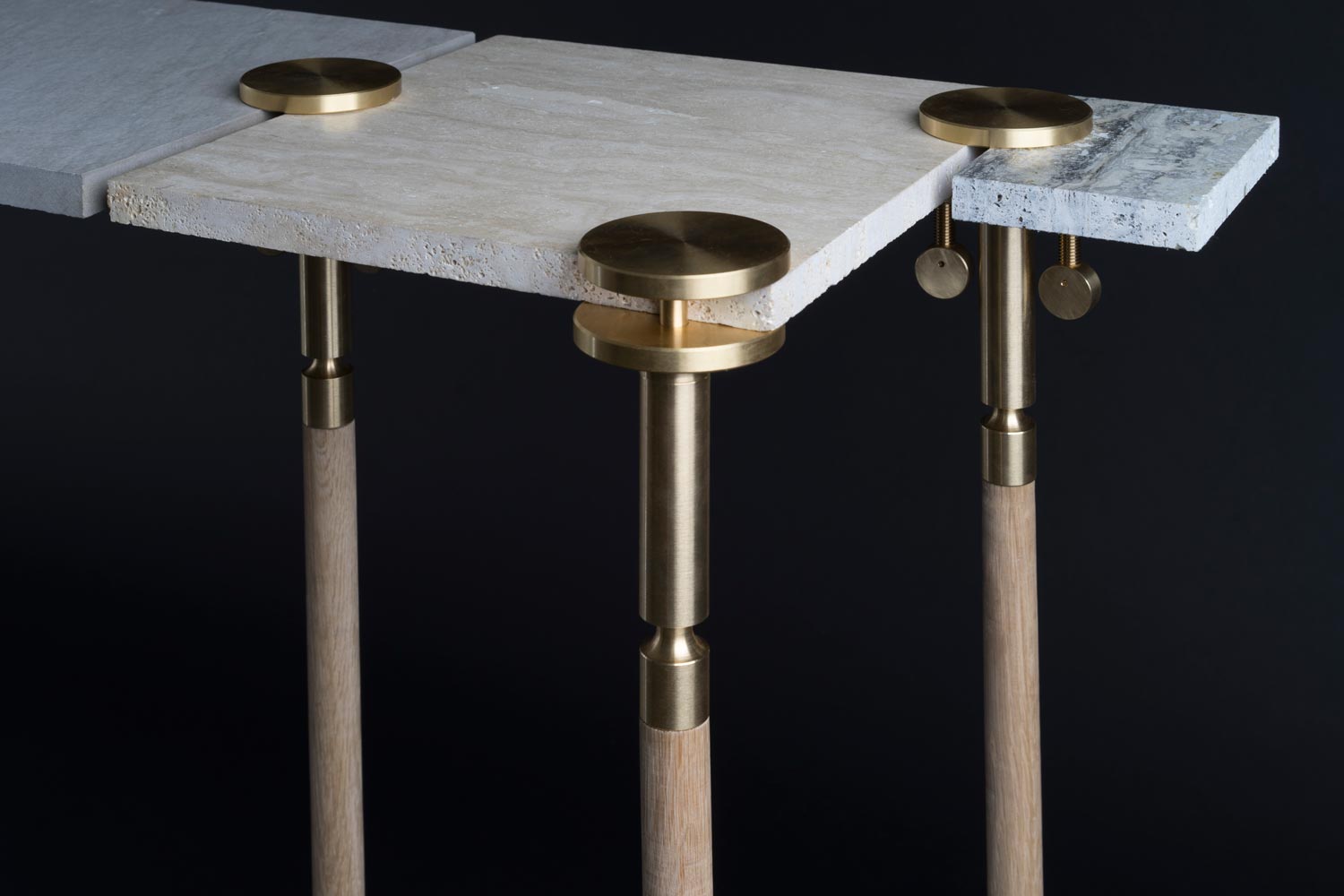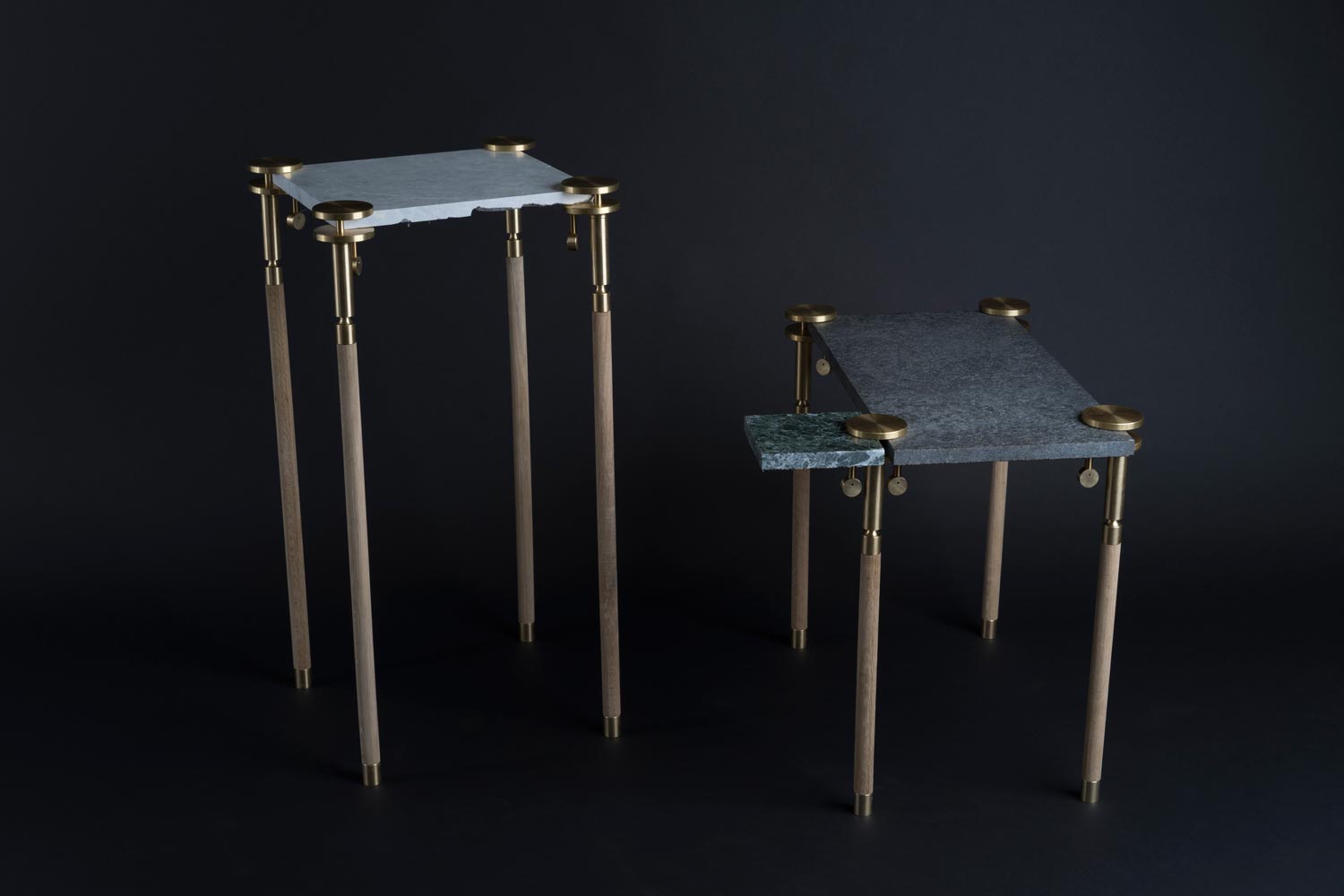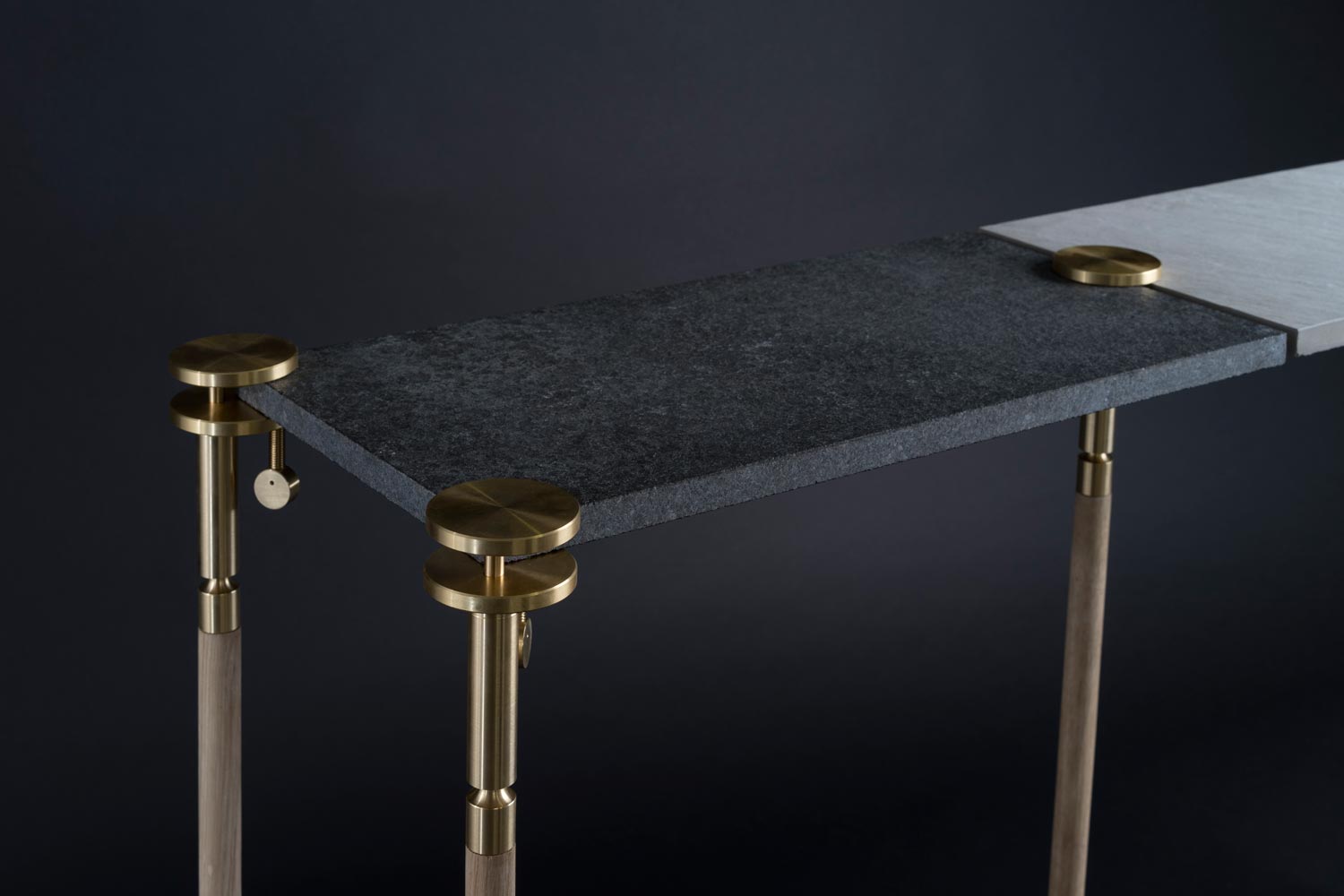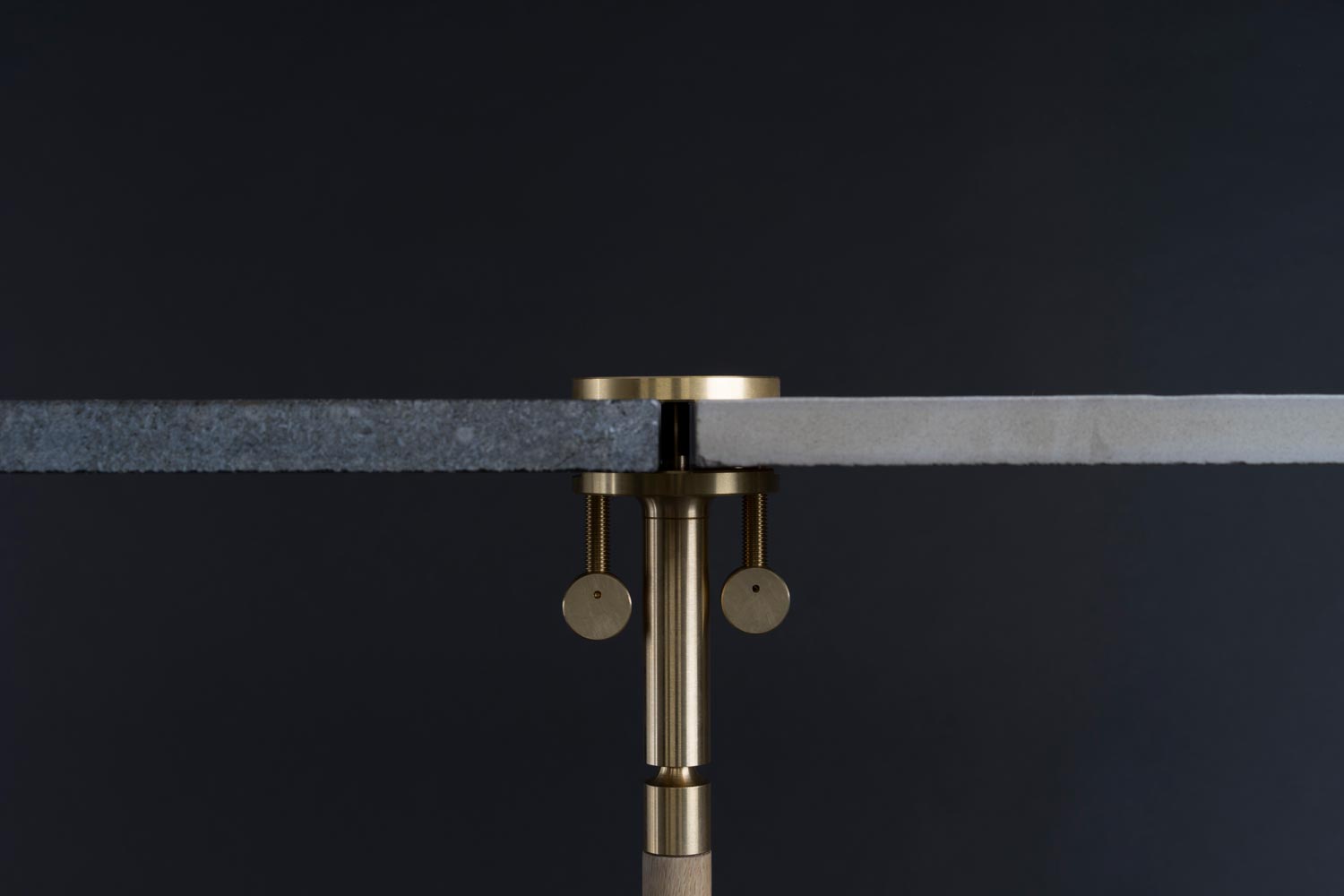The Remnants Table Series
Josh Carmody Studio
Think of every architectural or interior project and every stone, timber and tile sample used for each of these projects. Then think about where those samples ended up after the completion of the projects. At some stage, most designers will have seen a nice sample of marble, wondering how they could repurpose it. Due to the inconsistent sizes that material samples come in, creativity in reusing these stone samples often stops at the humble drink coaster. The Remnants clamp system was designed to inspire architects and designers to reuse these stone, tile, and timber samples that are often forgotten in their design studio libraries – to utilise an untapped resource of materials, and bring functional pieces of furniture to life in a creative, yet simple way.
The Remnants Table Series revolves around two clamps designed to hold materials of varying thicknesses up to 30mm. The clamps are assembled from a range of purpose-designed components machined in solid brass. Each clamp is fitted with a leg component (available at different lengths) dependant on the desired table height. The single-sided clamp was designed to hold one material and act as a table leg at the corner or side of a table. The double-sided clamp can be used to hold and join two materials of equal or varying thicknesses. The use of both clamps together makes it possible to create tables of varying shapes and heights with the freedom to add structural support wherever needed.
Each clamp has a primary clamping mechanism on the post and one or two secondary thumb-screw clamps for fine tuning the holding pressure. In order to create a flat table surface, the Remnants clamps were designed push the materials up from below so when you are making a table top with varying material thicknesses, the table top surface is levelled out. The system is simple to use and no tools are required for assembly. The Remnants clamps can be completely disassembled.
The Remnants concept was designed with a layered approach to sustainability. It was designed to reuse/recycle materials that have already been manufactured/produced. It was designed for simple and ongoing reuse; if a table no longer meets requirements, it can be changed. And it was designed for repair; if a clamp is damaged, any component can be switched out for a new one. Finally, the Remnants clamps were designed to be recycled; brass has a solid scrap resale price, making the likelihood of recycling high.
This object appeals to the designer as both the user and the specifier. The appeal goes beyond that of a product that looks, feels and functions nicely. Rather, this is an object that designers can have a connection with via an understanding of the motive behind it.
Photography: Andrew Walsh




